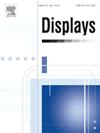A novel heart rate estimation framework with self-correcting face detection for Neonatal Intensive Care Unit
IF 3.7
2区 工程技术
Q1 COMPUTER SCIENCE, HARDWARE & ARCHITECTURE
引用次数: 0
Abstract
Remote photoplethysmography (rPPG) is a non-invasive method for monitoring heart rate (HR) and other vital signs by measuring subtle facial color changes caused by blood flow variations beneath the skin, typically captured through video-based imaging. Current rPPG technology, which is optimized for ideal conditions, faces significant challenges in real-world clinical settings such as Neonatal Intensive Care Units (NICUs). These challenges primarily arise from the limitations of automatic face detection algorithms embedded in HR estimation frameworks, which have difficulty accurately detecting the faces of newborns. Additionally, variations in lighting conditions can significantly affect the accuracy of HR estimation. The combination of these positional changes and fluctuations in lighting significantly impacts the accuracy of HR estimation. To address the challenges of inadequate face detection and HR estimation in newborns, we propose a novel HR estimation framework that incorporates a Self-Correcting face detection module. Our HR estimation framework introduces an innovative rPPG value reference module to mitigate the effects of lighting variations, significantly reducing HR estimation error. The Self-Correcting module improves face detection accuracy by enhancing robustness to occlusions and position changes while automating the process to minimize manual intervention. Our proposed framework demonstrates notable improvements in both face detection accuracy and HR estimation, outperforming existing methods for newborns in NICUs.
用于新生儿重症监护室的新型心率估算框架与自校正人脸检测技术
远程照相血压仪(rPPG)是一种非侵入性方法,通过测量皮下血流变化引起的细微面部颜色变化来监测心率(HR)和其他生命体征,通常通过视频成像来捕捉。目前的 rPPG 技术针对理想条件进行了优化,但在新生儿重症监护室 (NICU) 等实际临床环境中却面临着巨大挑战。这些挑战主要源于嵌入在 HR 估计框架中的自动人脸检测算法的局限性,该算法难以准确检测新生儿的脸部。此外,光照条件的变化也会严重影响心率估计的准确性。这些位置变化和光照波动的结合会严重影响 HR 估计的准确性。为了解决新生儿人脸检测和心率估算不足的难题,我们提出了一个新颖的心率估算框架,其中包含一个自校正人脸检测模块。我们的心率估计框架引入了创新的 rPPG 值参考模块,以减轻光照变化的影响,从而显著降低心率估计误差。自校正模块通过增强对遮挡和位置变化的鲁棒性来提高人脸检测的准确性,同时实现流程自动化,最大限度地减少人工干预。我们提出的框架在人脸检测准确性和心率估计方面都有显著改进,在新生儿重症监护室的新生儿方面优于现有方法。
本文章由计算机程序翻译,如有差异,请以英文原文为准。
求助全文
约1分钟内获得全文
求助全文
来源期刊

Displays
工程技术-工程:电子与电气
CiteScore
4.60
自引率
25.60%
发文量
138
审稿时长
92 days
期刊介绍:
Displays is the international journal covering the research and development of display technology, its effective presentation and perception of information, and applications and systems including display-human interface.
Technical papers on practical developments in Displays technology provide an effective channel to promote greater understanding and cross-fertilization across the diverse disciplines of the Displays community. Original research papers solving ergonomics issues at the display-human interface advance effective presentation of information. Tutorial papers covering fundamentals intended for display technologies and human factor engineers new to the field will also occasionally featured.
 求助内容:
求助内容: 应助结果提醒方式:
应助结果提醒方式:


